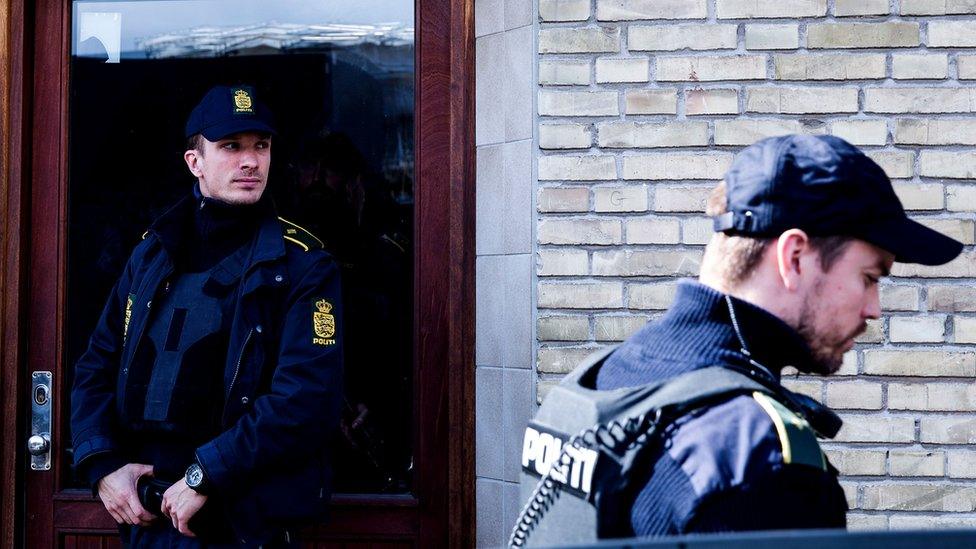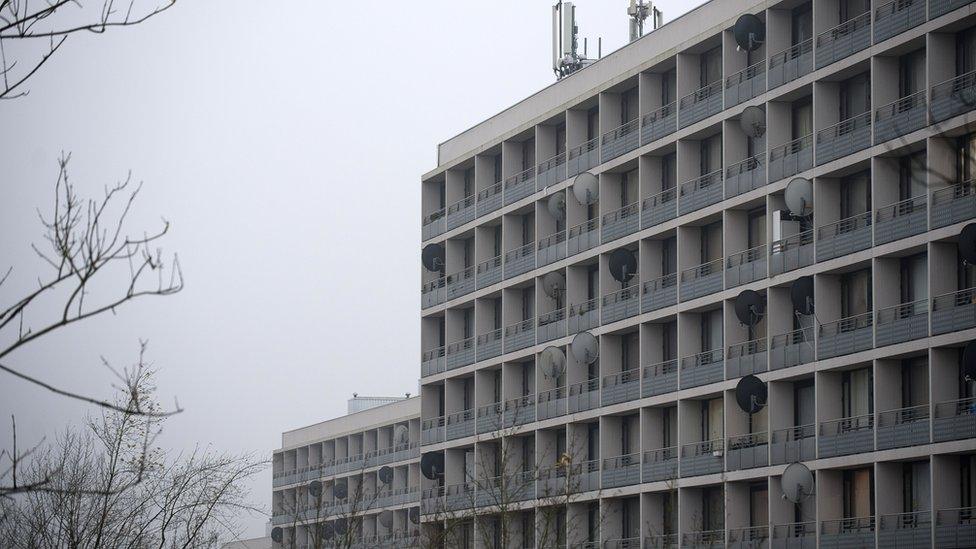Denmark plans double punishment for ghetto crime
- Published

Law and order in majority immigrant areas is a big issue in Denmark
The Danish government plans to double the penalties for crimes committed in deprived "ghetto" areas, where immigrant numbers are above-average.
It is part of a drive to have "no more ghettos by 2030", Prime Minister Lars Lokke Rasmussen said.
The government lists 22 areas as "ghettos", where more than 50% of residents are non-Western immigrants.
The plan would let local police chiefs impose double punishments for some crimes, such as vandalism or theft.
Justice Minister Soeren Pape Poulsen, who leads the Danish Conservative Party, explained the initiative to Danish DR news.
"If there has been more vandalism, violence, threats and so on, then the local police chief can say that this is now a harsh penalty zone, and the penalty will be doubled when you commit a crime there."
He denied that harsher penalties in one area could simply drive criminals into other areas.
"It has to be safe to live anywhere in Denmark," he stressed.

Tower blocks like this in a poor part of Aarhus are typical of Denmark's "ghetto areas"
Danish legal expert Birgitte Arent Eiriksson, quoted by the news website The Local, said the double punishment plan risked violating the principle that "everyone is equal before the law".
However, the opposition Social Democrats say they support the plan.
Read more on Danish immigration issues:
The government is also trying to tackle "parallel societies", targeting immigrants who resist integration with local Danes, preferring to stick to their own traditions.
The Danish Ministry of Economic Affairs and Interior says the country has about half a million inhabitants with non-Western backgrounds - 10 times more than in 1980.
It estimates that 28,000 immigrant families "live in a parallel society", and the proportion who do so reaches about 50% in "ghetto areas". The largest ethnic groups in that category are Somalis (44%) and Lebanese (41%), the ministry says.
The government listed the 22 "ghetto areas" in December, external, including data on unemployment, education levels and income.
An area is listed if its population matches at least three of five social criteria, which are:
The population is more than 50% non-Western immigrant
More than 2.7% have criminal convictions
Unemployment is above 40%
More than 50% have only a basic education
Average gross income is less than 55% of the average for the region.